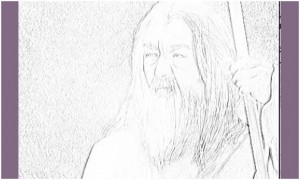

- #ZOOMIFY CONVERTER TUTORIAL HOW TO#
- #ZOOMIFY CONVERTER TUTORIAL INSTALL#
- #ZOOMIFY CONVERTER TUTORIAL UPDATE#
Nevertheless I "hit another BRICK WALL", My most time-enduring & unsolved case yet. Searched here,found your Gallica URL trick extremely usefull! helping me progress my Lifes work thus far but. Soon ran into a compatibility issue using Dezoomify on Gallica. Upon discovery I successfully used Dezoomify on to step up the quality to its highest standard avail! Leaflet seems to behave strangely if your map tiles don't cover the whole map view port, so if one of your zoom levels has a particularly small tile set (something in the order of 512px wide combined), then you may have to disable that zoom level.Side note: HUGE FAN!!!! YOU HAVE NO IDEA WHAT BLESSING YOU HAVE BEEN SO FAR, A GOD SENT TOOL FOR MY BIBLE PROJECT!!! YOU ARE A PIONEER AND SO FAR YOU BRING THE ONLY REAL SOLUTION FOR US OF LESS TECHNICAL BACKGROUND!!! THANK YOU!, IF YOU ONLY KNEW THE AMOUNT OF WISDOM & KNOWLEDGE THAT WILL RESULT FROM YOUR CREATION, HOPEFULLY LEADING TO SALVATION OF MANY SOULS! Hit refresh and hopefully you'll see a zoomable map. They should match the with and height of your largest image (the full zoom image). Lastly, don't forget to check that your map max bounds are correct. tiles_99.png => total_tiles = 100 total_tiles = 100 tiles_per_column = image_width / tile_width row = 0 column = 0 ( n. To do this, we'll use a simple ruby script: tile_width = 256 tile_height = 256 image_width = 1024 image_height = 6144 n = 0 # To get this number, look at the number of tiles # generated, find the last tile number and add 1 # e.g. Leaflet expects to be able to request tiles by an X,Y coordinate, so now we have to rename these tiles from a linear sequence to something useable. After imagemagick finishes, you should have a stack of new tiles named tiles_.png. +repage will fix some PNG encoding issues. You can override the default tile size, so if this doesn't work for you, change it to something more suitable. Assuming that you have an image called big_image.png: $ convert -crop 256x256 +repage big_image.png tiles_%d.pngĢ56x256 is the default tile size for Leaflet and we're assuming that your image divides evenly by this. Once you have imagemagick installed, you can use it to chop your image up into multiple tiles. There should only be 3 or 4 packages needed if you're running OS X 10.8.
#ZOOMIFY CONVERTER TUTORIAL INSTALL#
Install imagemagick if you don't already have it installed (avaliable on homebrew) via brew install imagemagick. Once you've installed tileup, skip down to "Using the tiles in leaflet".

#ZOOMIFY CONVERTER TUTORIAL HOW TO#
Update: I wrote a gem called tileup, you can read about how to use and install it here. Insert JS to convert between pixel coordinates and set the max bounds of the map.įor this example we'll assume our image is 1024圆144.Rename tiles to fit naming conventions.The tutorials show how easy it is to wire up something like open street maps and start mapping, but it's not so obvious how you can use Leaflet to explore non-geographical imagery (with non lat-lng coordinates). Leaflet.js is a free & open source javascript mapping library, akin to Google Maps.
#ZOOMIFY CONVERTER TUTORIAL UPDATE#
I plan to update the guide when I have time. Hey! This was written for Leaflet.js 0.5.1, sorry, it might not work anymore but hopefully it's still helpful. Using Leaflet.js with non-geographic imagery


 0 kommentar(er)
0 kommentar(er)
